Welcome to October! The start of fall semester is here… and so is the month of Halloween!
Around the world, but especially in Europe and the Americas, the end of October to the beginning of November is associated with death, ghosts, spirits, and scary night creatures. In old Celtic European religions, people celebrated October 31st or November 1st as Samhain, the day when the veil between the living and the spirit world grew thinner and spirits could cross into the living world. People would wear disguises so that the spirits could not recognize them, light bonfires to create spirit-free spaces, put out gifts of food to appease the angry spirits, and perform rituals to make sure that the spirits returned properly to the spirit world. The Catholic Church replaced these celebrations with a “Day of the Dead,” a day to visit ancestors’ graves, light candles, and offer prayers (similar to Obon). However, many people of Celtic origins continued to celebrate Samhain in the UK and elsewhere, and eventually a non-religious version called Halloween became popular. Today, few people celebrate the original Samhain, but Day of the Dead is celebrated as a religious day by Catholics across the world, while Halloween is celebrated in many cultures as an imaginative, fun night for children.
Halloween Traditions:
The modern celebration of Halloween includes decorations, wearing costumes, and collecting or giving out candy and treats.
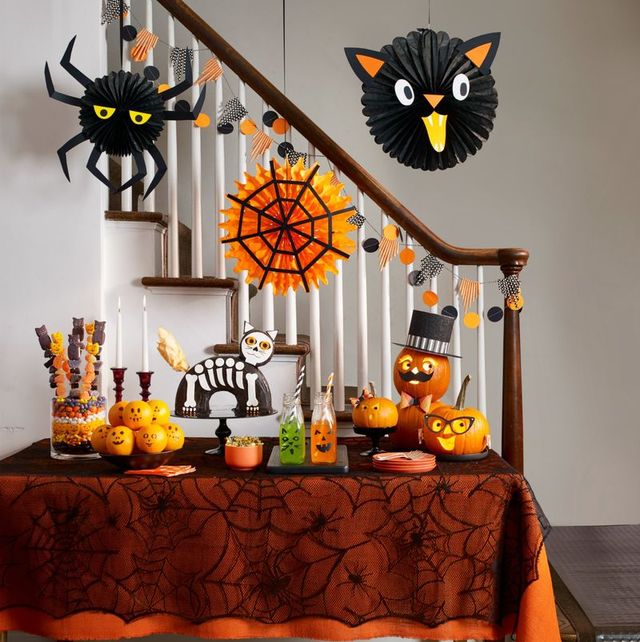
Cute decorations 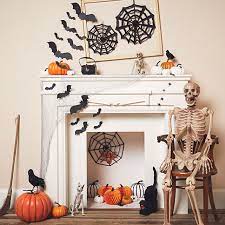
Spooky decorations 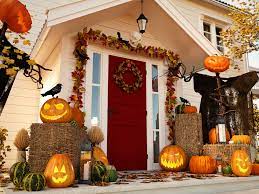
Autumn Harvest decorations 
Symbols of Death decorations 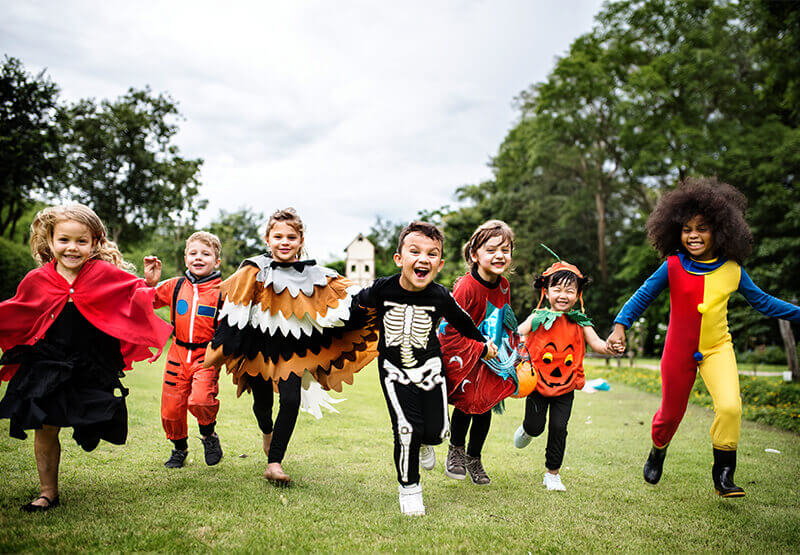
Children in costumes 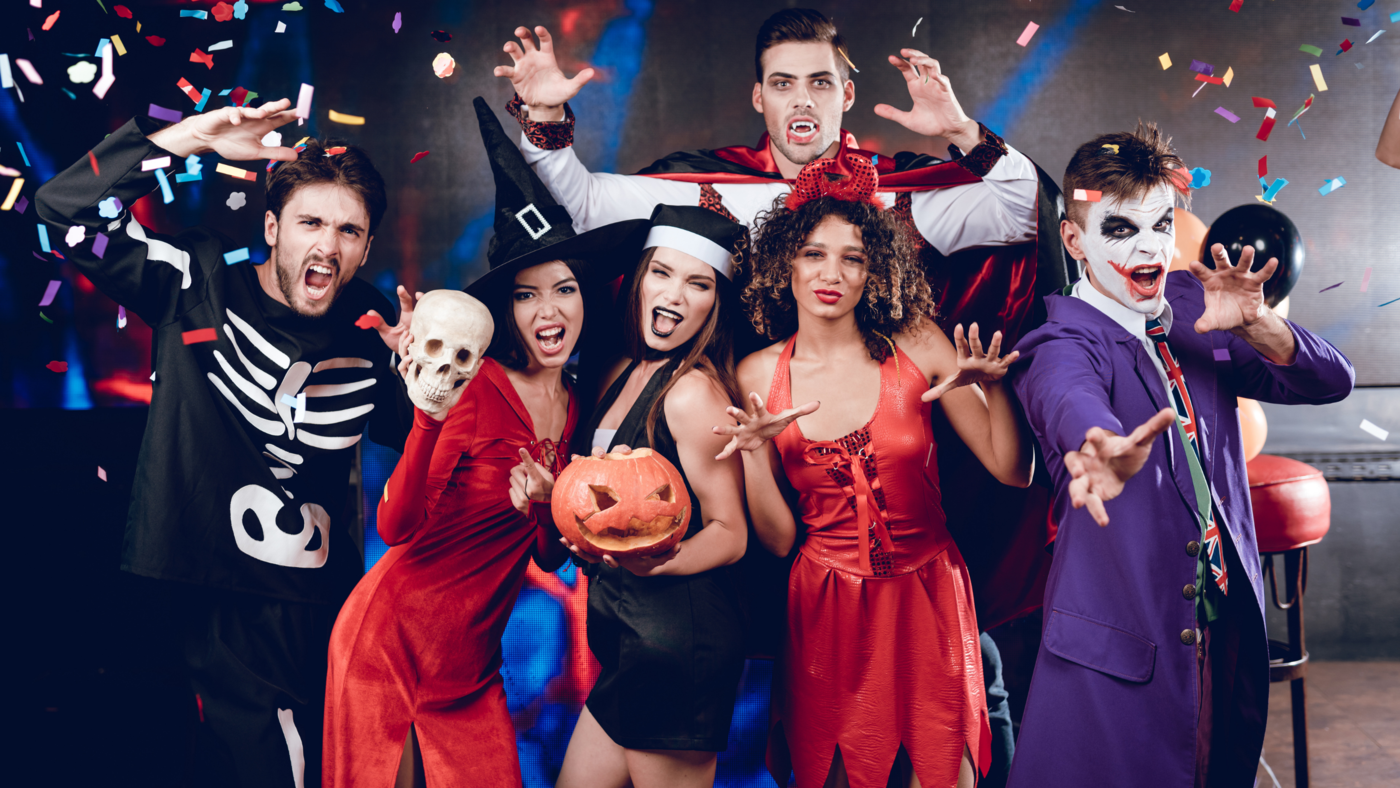
Adults in costumes 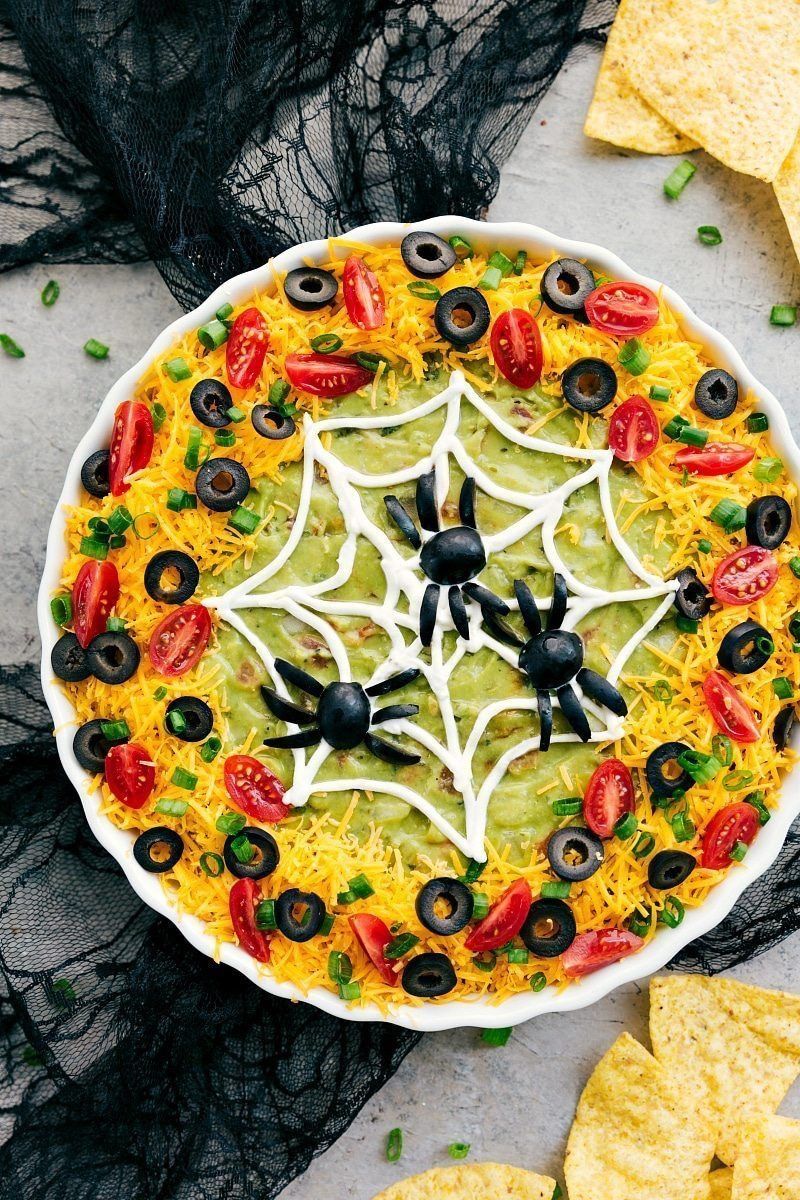
“Spiders” 7-layer Dip 
“Ghosts and Pumpkins” Fruit 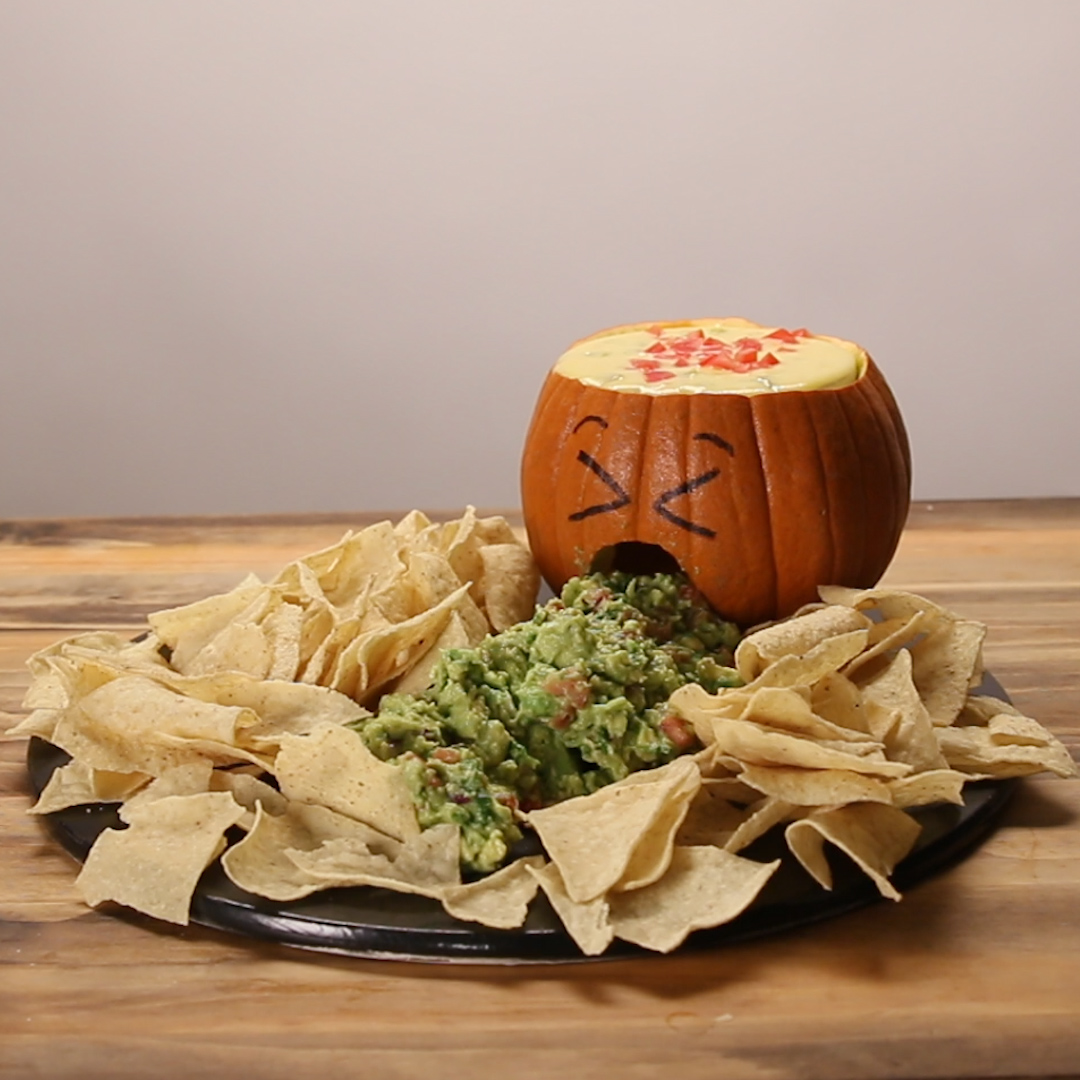
“Barfing” Guacamole and Queso Pumpkin 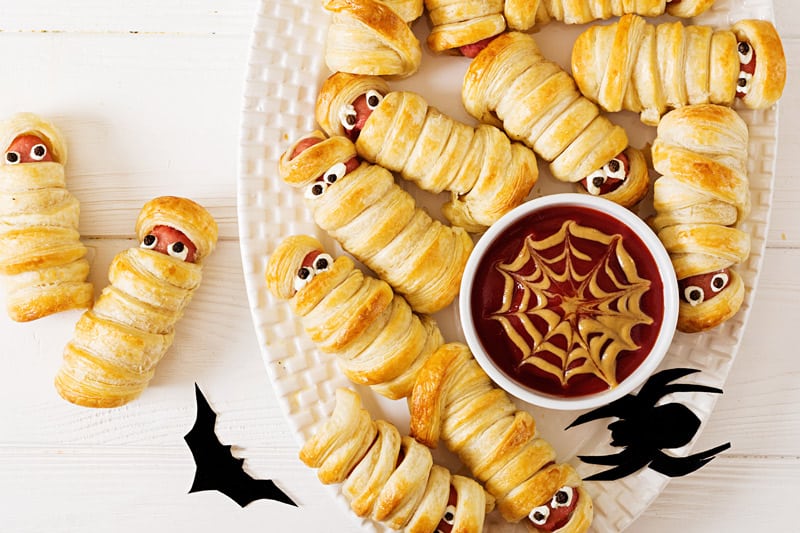
“Mummies” Pigs in a Blanket 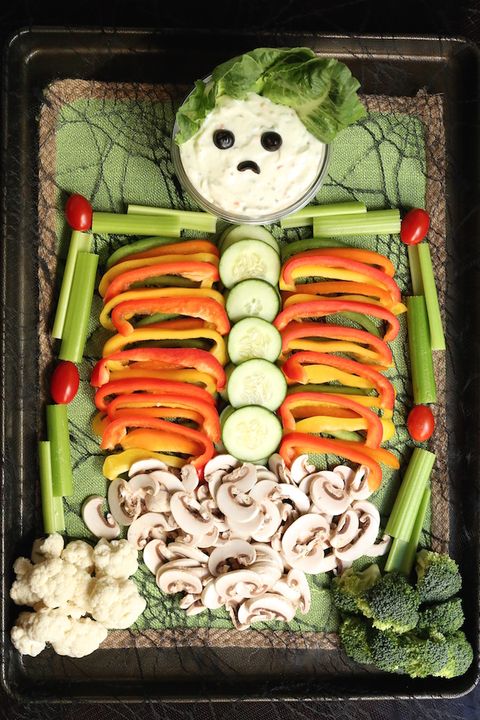
Veggies “Skeleton” 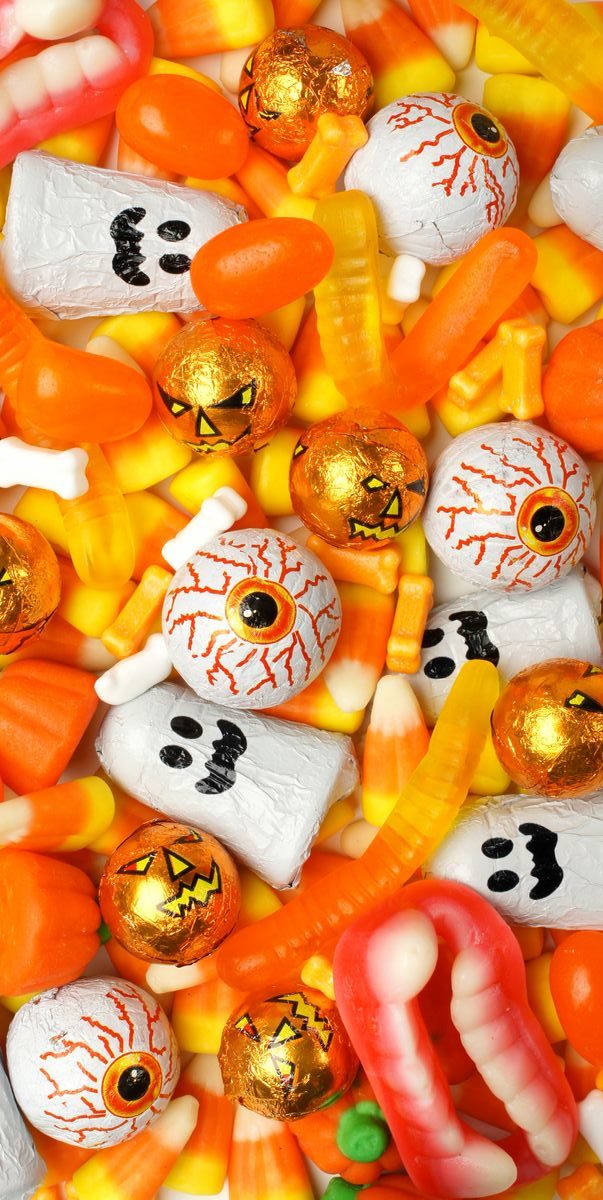
Halloween candy
Cultural Symbols and Halloween:
Dracula/Vampires: The story of Count Dracula, an immortal bloodthirsty monster who sleeps in a coffin in his Transylvanian castle, was created by the British author Bram Stoker in 1897. Some claim that the story drew inspiration from the real-life existence of Vlad the Impaler. Vampires are generally depicted as having powerful positions in society, intelligence, charisma, and an elegant beauty. Not only is their body preserved, but so is their clothing–and therefore a representation of their social status. This presentation strongly contrasts with the zombie undead (see below). Since Stoker’s invention of the supernatural vampire, many stories of vampires have appeared in popular Western literature. Vampires are another famous example of “life after death,” making them popular near Halloween.

Frankenstein’s Monster: When English speakers hear the name “Frankenstein,” they often think of a constructed humanoid monster who is hideous and dangerous. However, in the original story by Mary Wollstonecraft Shelley, Frankenstein was actually the name of the doctor who created the reanimated humanoid. In literary discussions, there is a philosophical debate as to which one is the true monster. Because the story has supernatural characters and explores the boundaries between life and death, it is most popular near the time of Halloween.
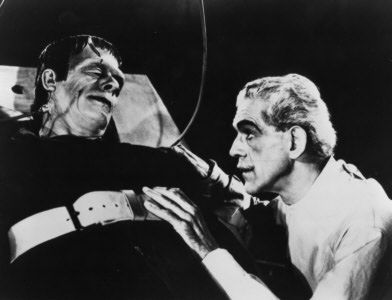
Ghosts: Ghosts are the essential supernatural presence at Halloween. They represent the spirits of the dead – specifically, those that have come to visit or that have not passed on peacefully to the spirit world. They are usually assumed to be invisible or difficult to see. Sometimes, people believe that ghosts can possess living bodies in order to communicate. The original Samhain festival specifically acknowledges the presence of ghosts and other spirits among the living world, and the rituals involve offering food to the spirits and chasing away the more dangerous ones.
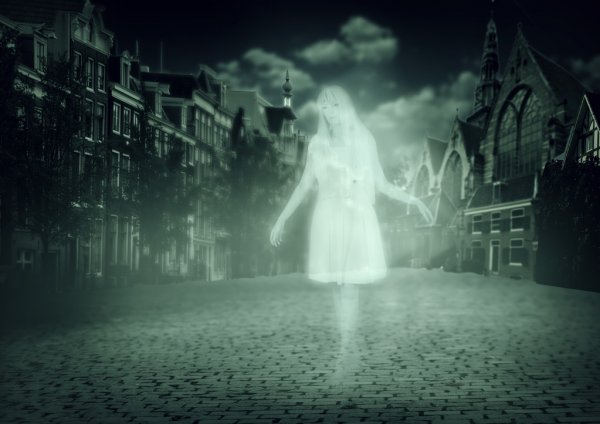
Werewolves: The existence of werewolves – humans who transform into wolf bodies – has appeared in European stories and mythologies since sometime in the Iron Age (from approx. 1200 BCE). Ancient Greek texts regularly reference wolf-men (or women), usually as a curse or as a result of offering entrails to Zeus in a temple of Zeus Lycaeus. (Another term for werewolf is lycanthrope.) In these cases, the transformation usually lasted 9 years–unless the transformed person ate human flesh while living as a wolf, in which case they remained a wolf permanently. Later, Germanic cultures associated werewolves with divine blessing or battle preparedness and the god Odin, going so far as to wear wolf skins into battle, while Slavic cultures associated werewolves with vampirism and demonic activity. From the 16th century, French, Spanish, and British cultures associated werewolves with witchcraft. People who were accused of either behavior were put on trial and executed for it. Fear of wolves was common at the time, as illustrated in the story of Little Red Riding Hood. Some people started to believe that sleeping under, or being exposed to, the light of the full moon would transform a person into a werewolf. (Wolves are associated with the night and moons because they howl at the moon, which may be the source of this idea.) Continuing the night versus day beliefs, writers in the 20th century started to claim that werewolves could only be killed with a silver bullet. (Silver is the color of moonlight, while gold is the color of daylight.) Nowadays, werewolves are associated with Halloween because they are seen as supernatural creatures of the night.
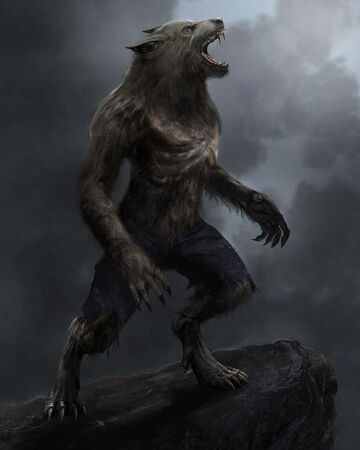
Mummies: Mummies are carefully wrapped and buried human bodies, representing an ancient burial custom from Egypt. However, the Western imagination is fascinated by the concept. Mummies were buried with food, money, and other items for the afterlife, implying that they would be able to use such materials after death, so modern Western culture presents mummies as re-animated or undead creatures. (Hence the association with Halloween.) In Halloween-related depictions of mummies, they have left their sarcophagus and are walking around with their cloth wrappings becoming loose. In this sense, they look and move similarly to zombies. However, more frequently than for zombies, mummies are shown as having fully intact minds: being capable of seeking what they need and forming complex strategies, such as planning attacks and setting traps.
Perhaps because European explorers knew that they were acting immorally in opening sacred burial chambers, there has been an ongoing sense of collective social guilt among Western generations ever since Howard Carter broke open Tutankhamun’s tomb in 1920. This guilt is represented in popular culture by reanimated mummies acting malevolently (aggressively and angrily) towards those who disturb their burial chamber or their “slumber”.
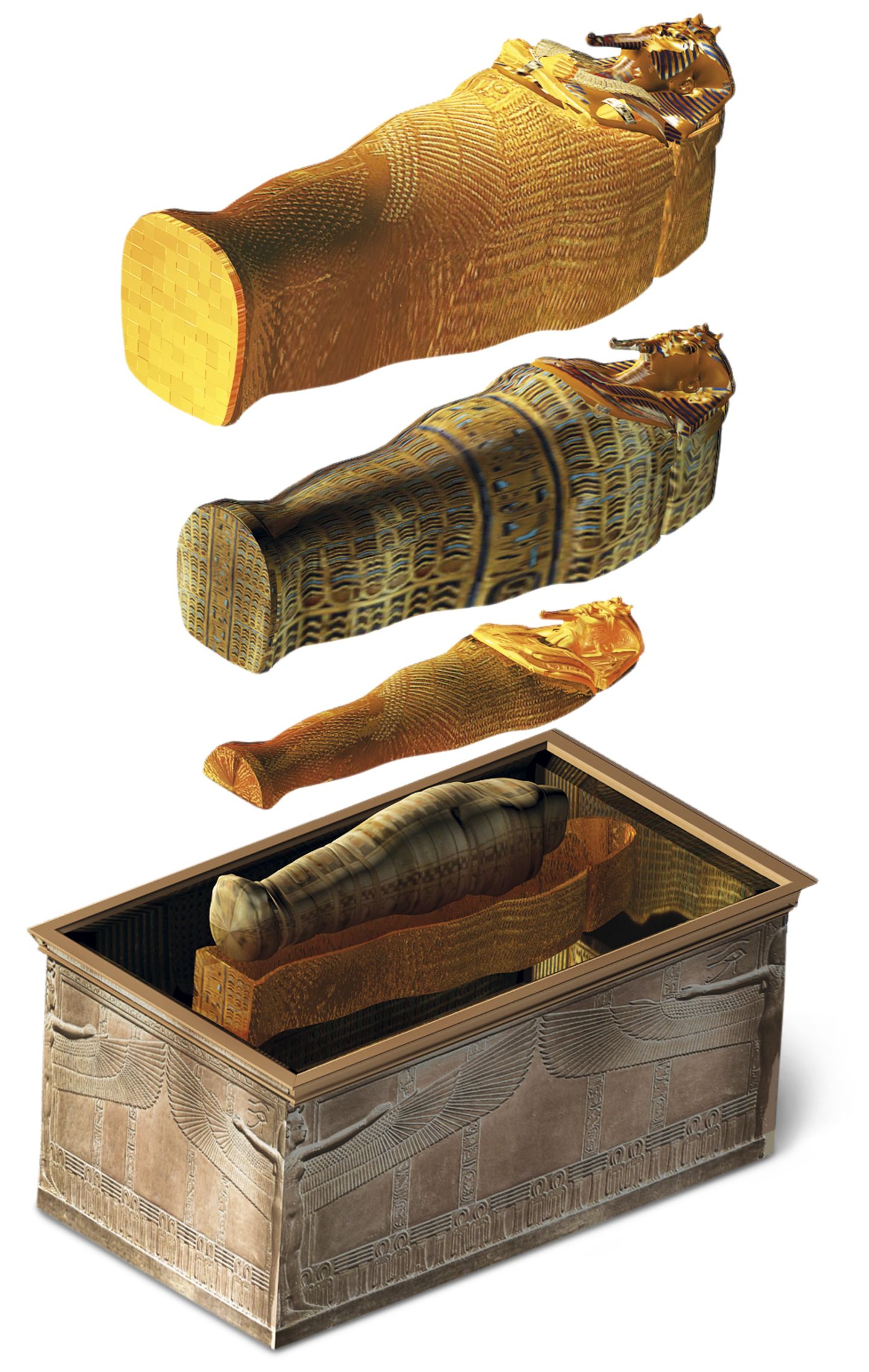
Witches: Witches in the second millennium CE were believed to have magical powers over the natural world, able to shape-shift into animal shapes or place curses on other people. In reality, witches were usually women who (1) knew, or in some cases, pretended to know, about herbal, emotional, and physical remedies to common physical and psychological conditions (sometimes called “medicine women”), (2) were comfortable in nature and had friendly relationships with local animals, who would follow them around and defend them, and/or (3) were wrongly accused of witchcraft because of a religiously repressive man’s infatuation and self-loathing. (The man’s terrible reasoning being “I am attracted to her, and I shouldn’t be, so she must have put a spell on me.”) Many women in Europe, early America, and other colonies died from being falsely accused as witches. However, the myth of the old herbalist woman with mystical powers and a black cat or raven companion lives on. Modern images of witches often include tall, pointed hats and flying on brooms.
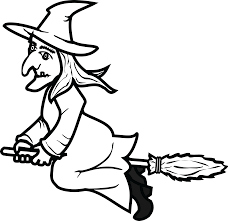
Ironically, as the Western belief in witches fades and traditional herbalism is replaced by modern medical treatments, there is an increasing number of Western women who self-identify as witches. Many women who practice Wiccan or other Neo-Pagan faiths define themselves as real witches. In addition, traditional practitioners in many regions continue to meet the definition of (1) and (2). In some regions, a variation of (3) appears — women are falsely accused of witchcraft and killed not because of lust, but because of misfortune. Sadly, superstition about “witchcraft” and resulting violence against women continues in some countries.
Zombies: Zombies are definitely an example of life after death, hence their modern association with Halloween. The story of zombies appears to have originated in the Caribbean as a mixture of Central African legends and a mythologized depiction of enslaved people – still moving physically, but with broken minds and spirits. Unlike undead vampires, who are traditionally shown in elegant, old-fashioned clothes and hairstyles that are somehow perfectly preserved throughout time, zombies are shown as mindless creatures in stained, decaying, torn rags with dirty hair and skin. They have lost all social status, individuality, personality, and human value. In fantasy stories, zombies spread their nature through infection (usually biting or physical contact) and they like to eat brains.
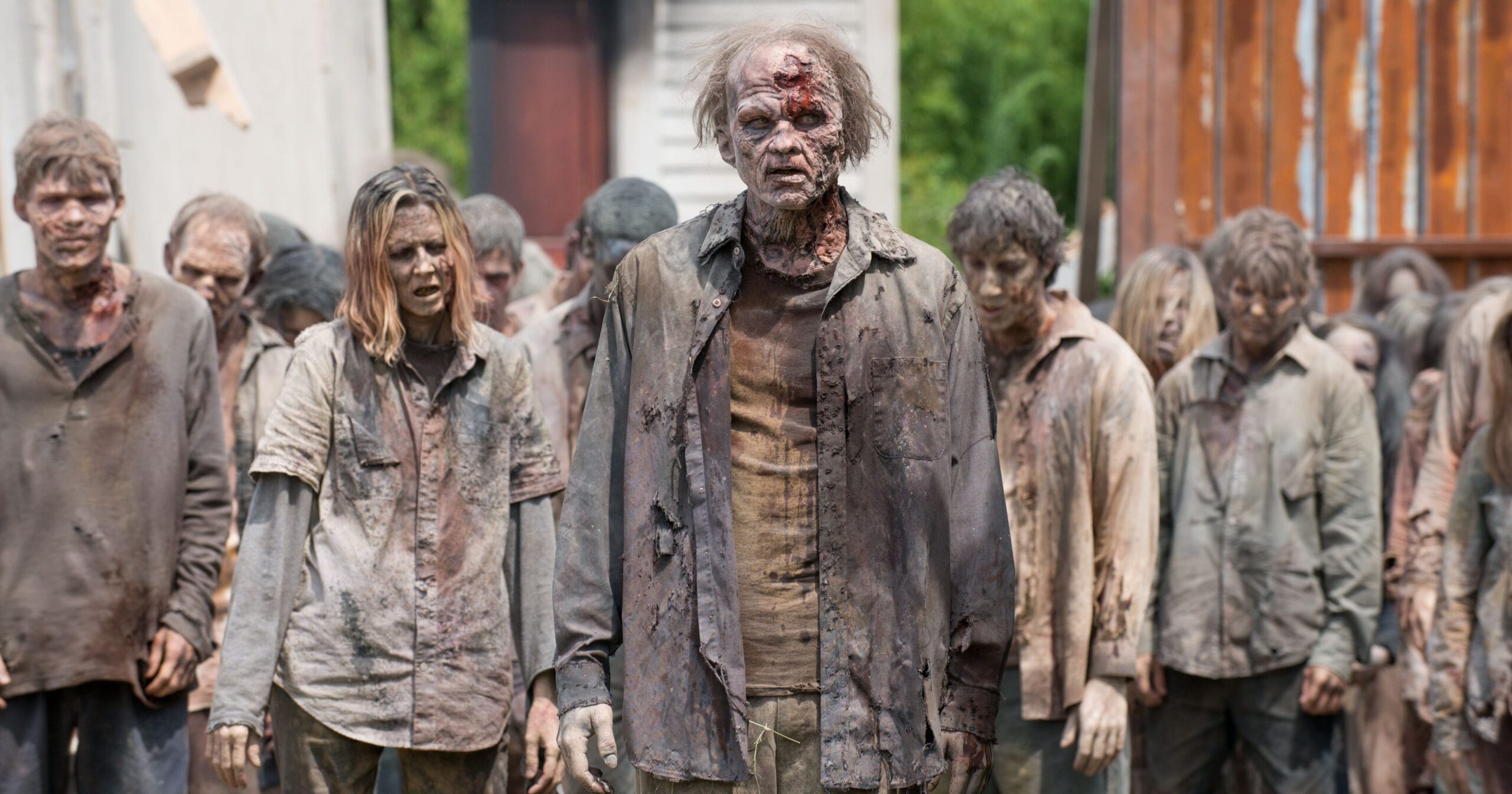
Pumpkins/Jack-o-lanterns: In America, pumpkins are harvested in late fall, near the Halloween season. People in Ireland used to carve scary faces into turnips in order to scare away evil spirits during Samhain. When they moved to America, pumpkins were adopted as a replacement. Now, pumpkin jack-o-lanterns represent a legacy that few fully remember.
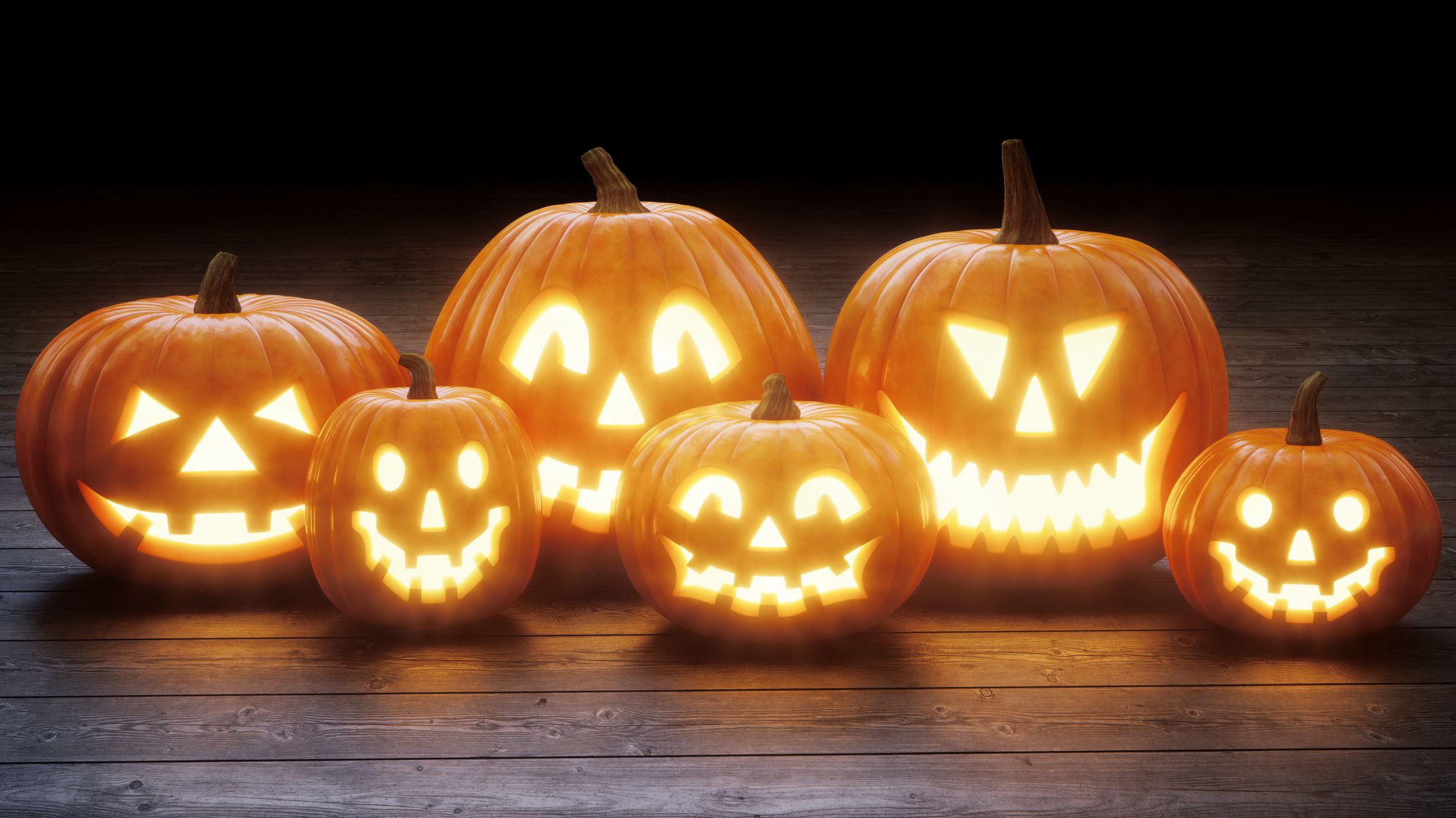
Black Cats/Ravens: There is an old superstition that if a black cat crosses the road in front of you, you will have bad luck. Of course, this is not true, but black cats became associated with death and fear, and some people started to believe that witches can turn into black cats. Now, black cats can be a minor symbol of Halloween. Ravens are also associated with death – they often circle dead bodies in search of food – and they are often shown as animal companions of witches.

Bats: Bats are strongly associated with vampires in popular Western culture. For example, there is a species of bat called the “vampire bat,” which drinks blood. In addition, bats (like vampires) hide from sunlight and emerge at night. Some vampire myths include the idea that vampires can change shape from human to bat (or the reverse) at will.
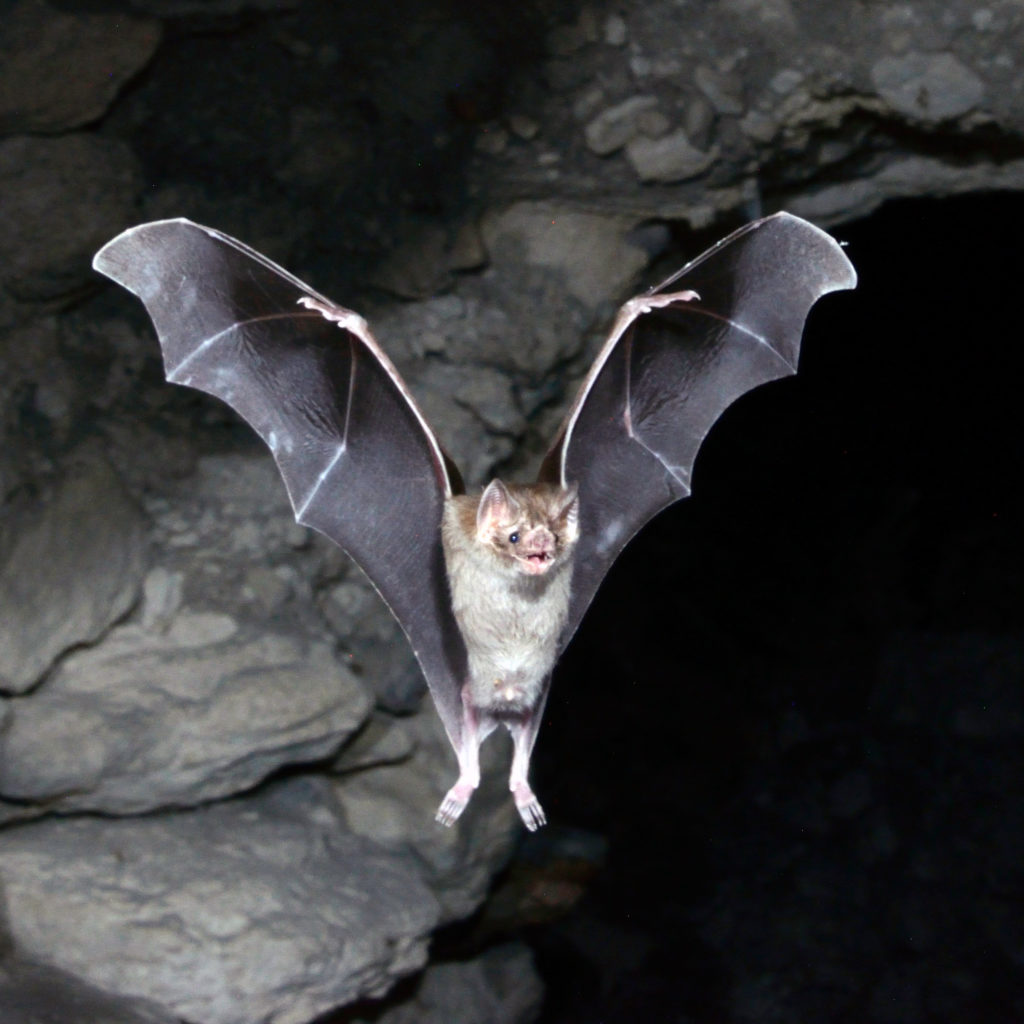
Songs about Halloween:
Halloween is a time of both celebration and fear, which creates intriguing musical expression. The Halloween “ambience” is often achieved with minor-key or atonal medieval-style music such as this playlist, but there are also modern Halloween songs. Below are some popular options.
- “Come, Little Children”: Originally written as a short sung poem for the Halloween film Hocus Pocus, this song was expanded and recorded in 2008.
- “This is Halloween”: Written by Danny Elfman in 1993 and used in the movie Nightmare before Christmas, This is Halloween is a highly popular song for Halloween.
- “Ghostbusters”: Written by Ray Parker Jr. in 1984 and used for the movie Ghostbusters, Ghostbusters is a popular Halloween dance party song.
- “Thriller”: Written and performed by Michael Jackson in the early 1980s, Thriller is an iconic Halloween song that references many types of monsters.
- “Monster Mash”: Written and performed by Bobby Pickett in the 1960s, the theatrical Monster Mash song continues to be a popular Halloween song for children and adults.
- “Addams Family” theme: In the 1960s, a television show called The Addams Family was released, featuring an eccentric Gothic family. They are often referenced near Halloween.
- “Spooky Scary Skeletons”: Originally a song in a 1929 Disney short cartoon, then re-released in 1996 by Andrew Gold, this song became more popular after a 2014 remix was released by a radio station.